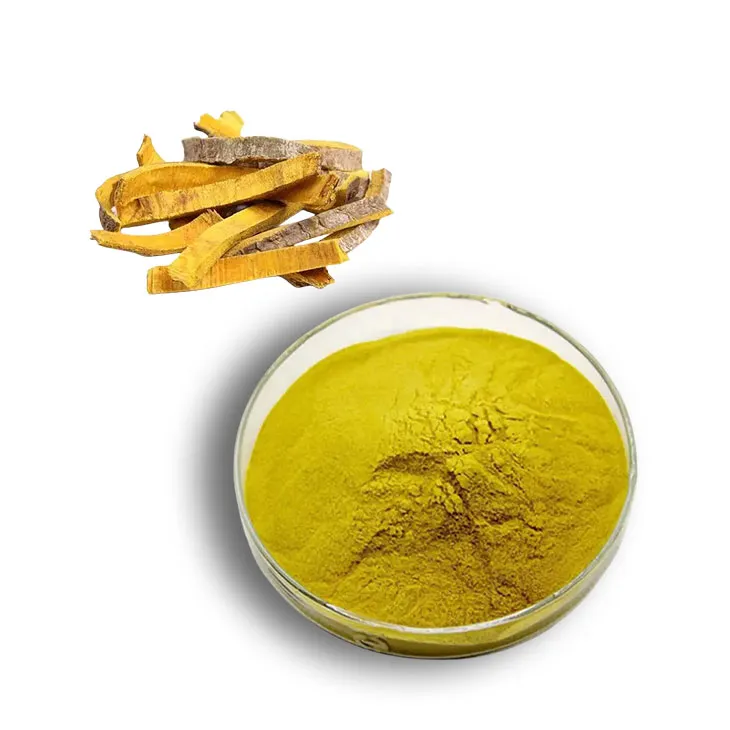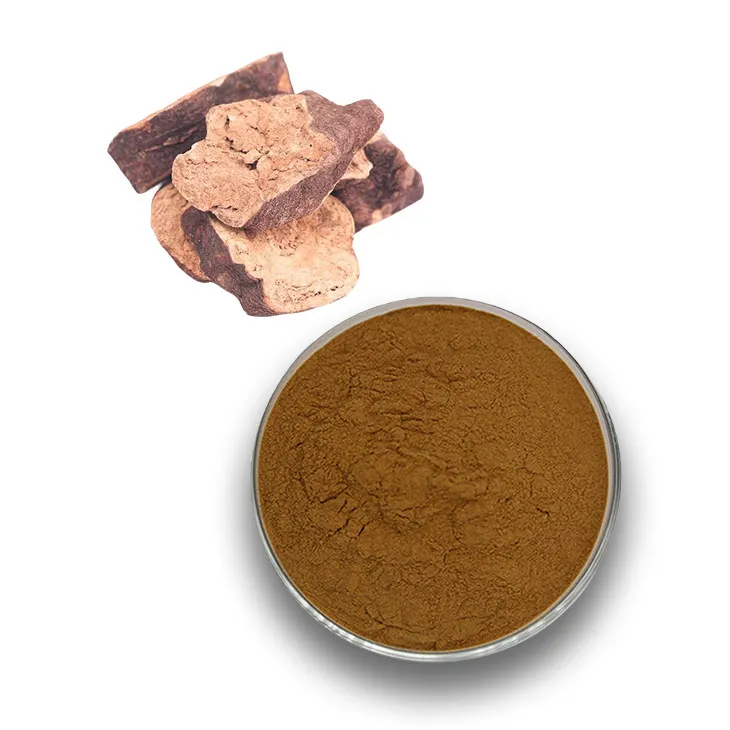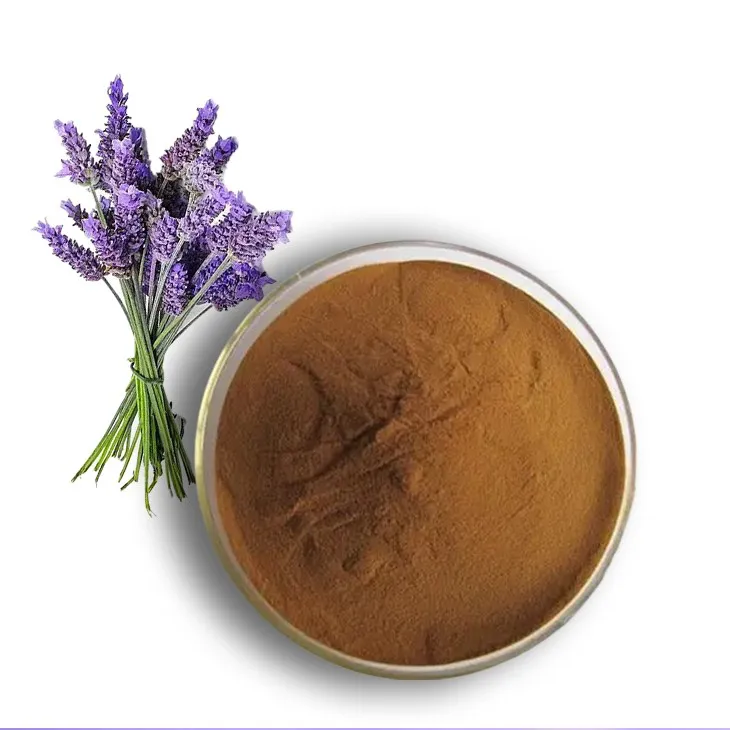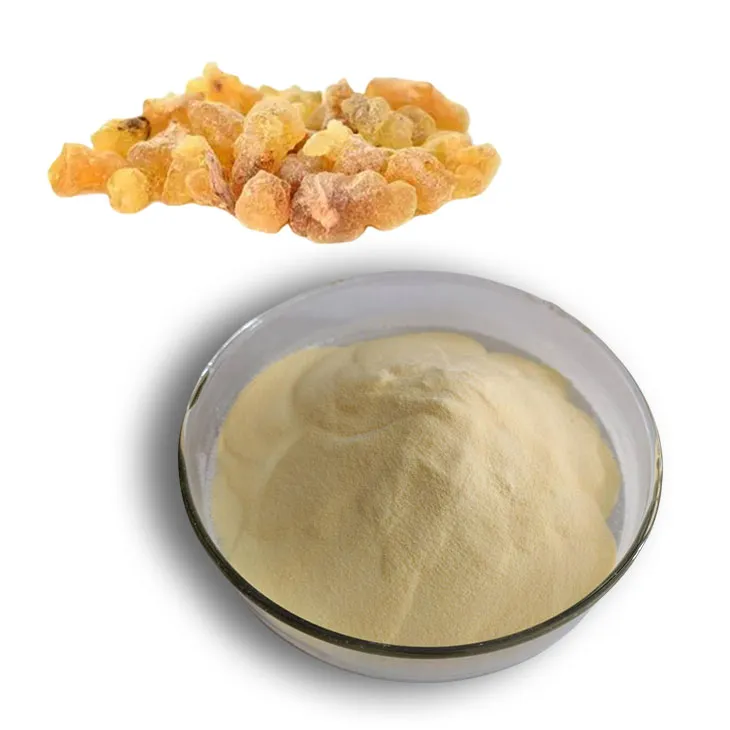- 0086-571-85302990
- sales@greenskybio.com
lc ms of plant extract
2023-09-26
1. Significance of LC-MS in Plant Extract Analysis
1. Significance of LC-MS in Plant Extract Analysis
Liquid chromatography-mass spectrometry (LC-MS) is a powerful analytical technique that has gained significant importance in the field of plant extract analysis. This method combines the separation capabilities of liquid chromatography with the identification and quantification capabilities of mass spectrometry, providing a comprehensive tool for the study of complex mixtures found in plant extracts.
1.1 Importance in Phytochemical Research
Phytochemical research is an essential aspect of modern pharmacology and nutritional science. LC-MS plays a crucial role in identifying, characterizing, and quantifying the bioactive compounds present in plant extracts. These compounds, which include alkaloids, flavonoids, terpenoids, and phenolic compounds, are often responsible for the therapeutic properties of plants. The ability of LC-MS to analyze these compounds with high sensitivity and specificity makes it an indispensable tool in the discovery of new bioactive compounds and the study of their pharmacological effects.
1.2 Quality Control and Standardization
The quality and efficacy of herbal products are highly dependent on the presence of their active constituents. LC-MS is used for quality control and standardization of plant extracts to ensure that they meet the required specifications. By establishing fingerprint profiles and quantifying marker compounds, LC-MS helps in the authentication of plant materials and the consistency of herbal products.
1.3 Metabolite Profiling and Metabolomics
Plant extracts are complex mixtures containing a wide range of metabolites. LC-MS is an ideal technique for metabolite profiling and metabolomics studies, which aim to provide a comprehensive analysis of the metabolites present in a biological sample. This approach is valuable for understanding the metabolic pathways in plants and their response to various stimuli, such as environmental stress or disease.
1.4 Environmental and Food Safety
LC-MS is also used to analyze plant extracts for the presence of contaminants, such as pesticides, heavy metals, and mycotoxins. This is important for ensuring the safety of herbal products and for monitoring the environmental impact of agricultural practices.
1.5 Drug Discovery and Development
The potential of plant extracts as a source of new drugs has been recognized for centuries. LC-MS is instrumental in the drug discovery process, from the initial screening of plant extracts for bioactivity to the identification of lead compounds and the optimization of their chemical structures.
1.6 Conclusion
In summary, the significance of LC-MS in plant extract analysis lies in its ability to provide detailed information on the composition of plant extracts, which is essential for various applications, including phytochemical research, quality control, metabolomics, environmental monitoring, and drug discovery. The continued development of LC-MS technology and its integration with other analytical techniques will further enhance its capabilities and applications in the study of plant extracts.
2. Sample Preparation Techniques for Plant Extracts
2. Sample Preparation Techniques for Plant Extracts
Sample preparation is a critical step in the analysis of plant extracts using liquid chromatography-mass spectrometry (LC-MS). It involves the extraction and purification of the target compounds from the plant material to ensure accurate and reliable results. Several techniques are employed for this purpose, each with its own advantages and limitations.
2.1 Solvent Extraction
Solvent extraction is the most common method for preparing plant extracts. It involves using a suitable solvent, such as methanol, ethanol, or water, to dissolve the compounds of interest. The choice of solvent depends on the polarity of the target compounds and the plant matrix. The extraction can be performed using various techniques, including:
- Soxhlet Extraction: A continuous extraction method that uses a Soxhlet apparatus to repeatedly wash the plant material with hot solvent.
- Ultrasonic-Assisted Extraction (UAE): Utilizes ultrasonic waves to enhance the extraction efficiency by breaking cell walls and increasing the solvent penetration.
- Pressurized Liquid Extraction (PLE): Uses high pressure and temperature to speed up the extraction process and improve the yield of target compounds.
2.2 Solid-Phase Extraction (SPE)
Solid-phase extraction is a technique used to selectively isolate and concentrate specific compounds from a complex mixture. It involves passing the plant extract through a column packed with a solid sorbent material, which selectively binds the target compounds. SPE is particularly useful for removing impurities and reducing matrix interferences in the LC-MS analysis.
2.3 Liquid-Liquid Extraction (LLE)
Liquid-liquid extraction is a separation technique that exploits the difference in solubility of compounds between two immiscible liquids. It is often used to partition polar compounds from nonpolar ones, or vice versa, by adjusting the pH of the solution to change the ionization state of the target compounds.
2.4 Supercritical Fluid Extraction (SFE)
Supercritical fluid extraction uses supercritical fluids, such as carbon dioxide, which have properties between those of a liquid and a gas. The high diffusivity and low viscosity of supercritical fluids allow for efficient extraction of compounds from plant material, with the added benefit of being environmentally friendly.
2.5 QuEChERS (Quick, Easy, Cheap, Effective, Rugged, and Safe)
QuEChERS is a sample preparation method that combines extraction, partitioning, and cleanup steps in a single procedure. It is particularly useful for the analysis of pesticide residues in plant extracts and can be adapted for other types of compounds.
2.6 Derivatization
In some cases, the target compounds may not be directly amenable to LC-MS analysis due to their chemical properties. Derivatization involves chemically modifying the compounds to improve their detection and separation. Common derivatization agents include silylating agents for hydroxyl groups and acetylating agents for amines.
2.7 Sample Drying and Concentration
After extraction, the plant extract is often concentrated to remove the solvent and increase the concentration of the target compounds. This can be achieved through evaporation, rotary evaporation, or lyophilization (freeze-drying).
2.8 Filtration and Centrifugation
To ensure the clarity of the sample and prevent clogging of the LC column, the plant extract is typically filtered through a syringe filter or centrifuged to remove any particulate matter.
The choice of sample preparation technique depends on the nature of the plant material, the target compounds, and the specific requirements of the LC-MS analysis. Proper sample preparation is essential for obtaining reliable and reproducible results in plant extract analysis.
3. Liquid Chromatography (LC) Methodology
3. Liquid Chromatography (LC) Methodology
Liquid chromatography (LC) is a pivotal technique in the analysis of plant extracts, providing the necessary separation of complex mixtures into individual components based on their chemical properties. The methodology of LC in plant extract analysis encompasses several critical steps and considerations, which are outlined below:
3.1 Column Selection
The choice of the column is crucial in LC analysis, as it directly affects the separation efficiency. Columns are typically made of silica-based materials and can be packed with various stationary phases such as C18, C8, or phenyl-hexyl. The selection of the column depends on the polarity of the compounds of interest and the mobile phase used.
3.2 Mobile Phase Composition
The mobile phase is the liquid that carries the sample through the column. It is usually a mixture of water and an organic solvent, such as acetonitrile or methanol. The composition of the mobile phase can be altered to optimize the separation of different compounds, with gradient elution being a common technique to improve resolution.
3.3 Gradient Elution
Gradient elution involves changing the composition of the mobile phase during the run to improve the separation of compounds with varying polarities. This technique can be linear, stepwise, or shaped according to the specific requirements of the analysis.
3.4 Flow Rate
The flow rate of the mobile phase through the column is another critical parameter. It affects the speed of analysis and the efficiency of the separation. Higher flow rates can lead to faster analysis but may also reduce resolution.
3.5 Temperature Control
Maintaining a consistent column temperature is essential for reproducibility and peak shape. Temperature can influence the viscosity of the mobile phase and the interaction between the analytes and the stationary phase.
3.6 Sample Injection Volume
The volume of the sample injected onto the column is another parameter that can affect the analysis. Too large a volume can overload the column, leading to poor separation and peak distortion.
3.7 Detection and Integration
After separation, the eluting compounds are typically detected using a UV-Vis or fluorescence detector before they reach the mass spectrometer. The integration of the peaks provides quantitative information about the compounds in the extract.
3.8 Method Development and Validation
The development of an LC method for plant extracts involves optimizing the parameters mentioned above to achieve the best separation and detection of the target compounds. Validation of the method includes assessing parameters such as linearity, precision, accuracy, and robustness.
3.9 Two-Dimensional LC (2D-LC)
In some cases, complex plant extracts may require two-dimensional liquid chromatography for comprehensive separation. This technique involves separating compounds in two orthogonal modes, providing enhanced resolution and peak capacity.
3.10 Hyphenation with Mass Spectrometry
The ultimate goal of LC in plant extract analysis is often the hyphenation with mass spectrometry (LC-MS), which allows for the identification and quantification of compounds based on their mass-to-charge ratio.
Understanding and optimizing the LC methodology is essential for the successful analysis of plant extracts, enabling the identification, quantification, and characterization of a wide range of bioactive compounds.
4. Mass Spectrometry (MS) Detection Techniques
4. Mass Spectrometry (MS) Detection Techniques
Mass spectrometry (MS) is a powerful analytical technique that has become indispensable in the identification and quantification of compounds present in plant extracts. It provides structural information and exact mass measurements, which are crucial for the elucidation of complex mixtures. Here, we discuss various MS detection techniques commonly employed in conjunction with liquid chromatography for plant extract analysis.
4.1 Ionization Techniques
The first step in MS analysis is the ionization of the analytes. Several ionization techniques are used in LC-MS, each with its own advantages and limitations:
- Electrospray Ionization (ESI): A soft ionization technique that is widely used for polar and thermally labile compounds. It is particularly suitable for the analysis of plant secondary metabolites such as flavonoids and alkaloids.
- Atmospheric Pressure Chemical Ionization (APCI): Similar to ESI but uses a different ionization mechanism, suitable for a broader range of compounds, including nonpolar molecules.
- Matrix-Assisted Laser Desorption/Ionization (MALDI): Used for the analysis of large biomolecules and can be applied to tissue imaging.
- APCI and APPI (Atmospheric Pressure Photoionization): These techniques are useful for the analysis of compounds that are difficult to ionize using ESI.
4.2 Mass Analyzers
After ionization, the ions are separated based on their mass-to-charge ratio (m/z) in the mass analyzer. Common mass analyzers used in LC-MS include:
- Time-of-Flight (TOF) Mass Spectrometers: Provide high-resolution mass measurements and are excellent for the identification of unknown compounds.
- Quadrupole Mass Spectrometers: Offer unit mass resolution and are commonly used for targeted analysis and quantitative studies.
- Orbitrap Mass Spectrometers: Known for their high mass accuracy and resolving power, they are ideal for complex mixtures and proteomics studies.
- Ion Trap Mass Spectrometers: Capable of performing multiple stages of MS (MSn), which is useful for structural elucidation of complex compounds.
4.3 Detection Modes
MS can be operated in various detection modes, depending on the analytical requirements:
- Selected Ion Monitoring (SIM): This mode is used for the detection of specific ions, providing high sensitivity and selectivity for targeted analysis.
- Full Scan: Records the mass spectrum over a defined mass range, providing comprehensive information about all detectable compounds.
- Multiple Reaction Monitoring (MRM): A scan mode used in quantitative analysis that monitors specific product ions from specific precursor ions, offering high sensitivity and specificity.
4.4 Tandem Mass Spectrometry (MS/MS)
Tandem mass spectrometry involves the sequential use of two or more mass analyzers, allowing for the fragmentation of ions to generate structural information. This technique is particularly useful for the identification and characterization of complex mixtures found in plant extracts.
4.5 Hyphenation with Other Techniques
MS can also be hyphenated with other analytical techniques to enhance selectivity and sensitivity. For example, LC-MS can be coupled with nuclear magnetic resonance (NMR) spectroscopy or infrared (IR) spectroscopy for comprehensive structural elucidation.
4.6 Data-Dependent Acquisition (DDA) and Data-Independent Acquisition (DIA)
- DDA: The most common method where the mass spectrometer selects the most abundant ions for fragmentation.
- DIA: An alternative approach that involves the fragmentation of all ions within a defined mass range, independent of their abundance, which can improve the detection of low-abundance compounds.
In conclusion, the choice of MS detection technique in plant extract analysis depends on the nature of the compounds of interest, the complexity of the sample, and the specific analytical goals. The combination of LC with MS provides a powerful tool for the comprehensive analysis of plant extracts, enabling the identification, quantification, and structural elucidation of a wide range of bioactive compounds.
5. Data Processing and Analysis
5. Data Processing and Analysis
Data processing and analysis are critical steps in liquid chromatography-mass spectrometry (LC-MS) analysis of plant extracts. They ensure that the data obtained is accurate, reliable, and interpretable, allowing for the identification and quantification of the compounds present in the extracts.
5.1 Data Preprocessing
Before analysis, raw data from LC-MS must undergo preprocessing to correct for any systematic errors or noise. This includes baseline correction, peak alignment, and noise reduction. Preprocessing steps are essential to improve the quality of the data and to facilitate subsequent analysis.
5.2 Peak Identification and Annotation
Once the data is preprocessed, the next step is peak identification and annotation. This involves matching the mass-to-charge ratios (m/z) of the detected ions to known compounds in a database or library. Advanced software tools are often used to automate this process, but manual verification is also necessary to ensure accuracy.
5.3 Quantitative Analysis
Quantitative analysis in LC-MS is performed by integrating the area under the peaks corresponding to the compounds of interest. Calibration curves are constructed using reference standards to determine the concentration of these compounds in the plant extracts. The accuracy of the quantification is dependent on the quality of the calibration curve and the precision of the peak integration.
5.4 Qualitative Analysis
Qualitative analysis involves the identification of unknown compounds based on their retention time and m/z values. This can be achieved through comparison with a reference library or by using tandem mass spectrometry (MS/MS) to generate fragmentation patterns that can be matched to known compounds.
5.5 Multivariate Data Analysis
Multivariate data analysis techniques, such as principal component analysis (PCA) and partial least squares discriminant analysis (PLS-DA), are used to explore the relationships between the compounds in the plant extracts and to identify patterns or clusters. These techniques can reveal the presence of bioactive compounds, metabolic pathways, or even the potential for new drug discovery.
5.6 Data Integration
In complex plant extracts, data integration is necessary to combine information from different analytical techniques or different stages of the LC-MS analysis. This can provide a more comprehensive understanding of the sample's composition and can aid in the identification of novel compounds or metabolic pathways.
5.7 Validation of Results
The validation of results is a critical step to ensure the reliability of the data. This includes assessing the repeatability, reproducibility, and accuracy of the analysis. External validation using spiked samples or comparison with other analytical techniques can further confirm the validity of the findings.
5.8 Reporting and Interpretation
Finally, the data must be reported and interpreted in a manner that is clear and understandable to the scientific community. This includes the presentation of the raw data, the processed data, and the conclusions drawn from the analysis. The interpretation should take into account the biological relevance of the findings and their potential impact on the field of plant extract analysis.
In conclusion, data processing and analysis in LC-MS of plant extracts are complex but essential processes that require careful attention to detail and the use of sophisticated software and statistical tools. By following these steps, researchers can gain valuable insights into the composition and bioactivity of plant extracts, contributing to the advancement of natural product research and development.
6. Applications of LC-MS in Plant Extract Analysis
6. Applications of LC-MS in Plant Extract Analysis
Liquid chromatography-mass spectrometry (LC-MS) has become an indispensable tool in the analysis of plant extracts due to its high sensitivity, selectivity, and the ability to provide structural information on a wide range of compounds. This section will explore the various applications of LC-MS in the field of plant extract analysis.
6.1 Identification and Quantification of Bioactive Compounds
LC-MS is widely used for the identification and quantification of bioactive compounds in plant extracts, such as alkaloids, flavonoids, terpenoids, and phenolic compounds. These compounds are often responsible for the medicinal properties of plants and are crucial for quality control in the pharmaceutical industry.
6.2 Metabolite Profiling
Plant metabolomics involves the comprehensive analysis of small molecules (metabolites) within plant cells. LC-MS plays a central role in metabolite profiling, allowing researchers to study the metabolic pathways and responses of plants to various stimuli, including environmental stress and disease.
6.3 Quality Control and Standardization
In the herbal medicine and dietary supplement industries, LC-MS is employed for quality control and standardization of plant extracts. By analyzing specific marker compounds, LC-MS ensures the consistency, purity, and potency of these products, which is vital for their safety and efficacy.
6.4 Detection of Adulterants and Contaminants
LC-MS is a powerful technique for detecting adulterants and contaminants in plant extracts, such as heavy metals, pesticides, and synthetic additives. This helps in ensuring the safety of plant-based products and in combating fraudulent practices in the market.
6.5 Study of Plant-Pest Interactions
Research into plant-pest interactions benefits from LC-MS, as it can be used to analyze the chemical changes in plants in response to pest attacks. This can lead to a better understanding of plant defense mechanisms and the development of pest-resistant crops.
6.6 Environmental Monitoring
Plant extracts can serve as bioindicators for environmental monitoring. LC-MS can be used to analyze these extracts for the presence of pollutants, providing insights into the state of the environment and the impact of human activities.
6.7 Drug Discovery and Development
The discovery of new drugs from plant sources is facilitated by LC-MS, which can identify novel bioactive compounds with potential therapeutic applications. Additionally, LC-MS is used in the development process to study the pharmacokinetics and pharmacodynamics of these compounds.
6.8 Food Safety and Quality Assessment
In the food industry, LC-MS is used to analyze plant extracts for the presence of harmful substances, such as mycotoxins, and to assess the quality of ingredients used in food products.
6.9 Forensic Analysis
In forensic science, LC-MS can be used to analyze plant extracts found at crime scenes or on evidence, aiding in the identification of substances and contributing to the investigation process.
6.10 Education and Research
LC-MS is a valuable tool in educational settings and research institutions, where it is used to teach and explore the chemistry of plant extracts, as well as to conduct cutting-edge research in various scientific disciplines.
The versatility of LC-MS in plant extract analysis underscores its importance in advancing our understanding of plant chemistry and its applications in various industries and research areas.
7. Case Studies of LC-MS in Plant Extract Analysis
7. Case Studies of LC-MS in Plant Extract Analysis
7.1 Introduction to Case Studies
Case studies provide practical insights into how LC-MS has been applied in the analysis of plant extracts. They demonstrate the versatility and effectiveness of this technique in identifying and quantifying various bioactive compounds.
7.2 Identification of Bioactive Compounds in Medicinal Plants
A case study involving the analysis of a traditional medicinal plant extract using LC-MS successfully identified several bioactive compounds, including flavonoids and alkaloids, which are known for their therapeutic properties. The study highlighted the sensitivity and selectivity of LC-MS in detecting trace amounts of these compounds.
7.3 Quantitative Analysis of Active Ingredients in Herbal Supplements
Another case study focused on the quantitative analysis of active ingredients in herbal supplements using LC-MS. The method allowed for accurate quantification of multiple compounds, ensuring the quality and consistency of the supplements. This application is crucial for the pharmaceutical industry to maintain product standards.
7.4 Metabolite Profiling in Plant Extracts
A study on metabolite profiling in plant extracts using LC-MS demonstrated the ability to analyze a wide range of metabolites, including sugars, amino acids, and organic acids. The comprehensive analysis provided insights into the metabolic pathways and biochemical processes in plants, which is valuable for understanding plant physiology and improving crop yield.
7.5 Detection of Pesticides in Plant Extracts
LC-MS has been employed in a case study to detect and quantify pesticide residues in plant extracts. The method's high sensitivity and specificity enabled the detection of trace amounts of pesticides, ensuring the safety and quality of plant-based products for consumption.
7.6 Analysis of Plant Extracts for Food Safety Assessment
In the food industry, LC-MS has been used to analyze plant extracts for the presence of harmful substances, such as mycotoxins. A case study demonstrated the effectiveness of LC-MS in detecting and quantifying mycotoxins, which are toxic compounds produced by fungi. This application is essential for ensuring food safety and preventing health risks associated with contaminated food products.
7.7 Environmental Monitoring of Plant Extracts
A case study on environmental monitoring using LC-MS involved the analysis of plant extracts to assess the presence of pollutants, such as heavy metals and organic contaminants. The method provided valuable information on the environmental impact of these pollutants and their potential effects on plant health and ecosystem balance.
7.8 Conclusion of Case Studies
The case studies presented in this section illustrate the diverse applications of LC-MS in plant extract analysis. They demonstrate the technique's ability to identify, quantify, and profile a wide range of compounds, providing valuable information for various fields, including medicine, agriculture, food safety, and environmental monitoring.
8. Challenges and Future Perspectives
8. Challenges and Future Perspectives
The application of liquid chromatography-mass spectrometry (LC-MS) in plant extract analysis has seen significant advancements, but it is not without its challenges. As the field continues to evolve, researchers and practitioners must address these issues to fully harness the potential of LC-MS technology.
8.1 Current Challenges
1. Complexity of Plant Matrices: Plant extracts often contain a wide variety of compounds, including proteins, lipids, and complex carbohydrates, which can interfere with the analysis of target compounds. This complexity requires sophisticated sample preparation techniques to isolate and concentrate the compounds of interest.
2. Ion Suppression in MS Detection: The presence of matrix components can lead to ion suppression in mass spectrometry, which can affect the sensitivity and accuracy of the analysis. This issue is particularly challenging in complex plant extracts.
3. Method Development and Optimization: Developing and optimizing LC-MS methods for specific plant extracts can be time-consuming and resource-intensive. Each plant species and its associated compounds require tailored methods, which can be a bottleneck in high-throughput analysis.
4. Data Overload and Analysis: The high-resolution data generated by LC-MS can be overwhelming, requiring advanced data processing and analysis tools. The interpretation of complex data sets is a significant challenge, particularly for identifying unknown compounds.
5. Reproducibility and Standardization: Ensuring the reproducibility of LC-MS results across different laboratories and instruments is a challenge due to variations in sample preparation, chromatographic conditions, and MS settings.
6. Cost and Accessibility: High-performance LC-MS instruments can be expensive, limiting their accessibility to researchers and institutions with sufficient funding.
8.2 Future Perspectives
1. Advancements in Instrumentation: Continued development of LC-MS technology, including improvements in sensitivity, resolution, and speed, will enhance the capabilities of plant extract analysis.
2. Automation and High-Throughput Analysis: Automation of sample preparation and analysis will increase throughput and reduce the potential for human error, making LC-MS more accessible for large-scale studies.
3. Multidimensional Chromatography: The integration of multidimensional chromatography with MS can improve the separation of complex mixtures, allowing for more accurate identification and quantification of compounds.
4. Metabolomics Approaches: The application of metabolomics strategies to plant extracts can provide a comprehensive overview of the plant's metabolic profile, offering insights into plant physiology and bioactivity.
5. Artificial Intelligence and Machine Learning: The use of AI and machine learning algorithms can improve data processing, analysis, and compound identification, handling the complexity of LC-MS data more efficiently.
6. Green Analytical Chemistry: The development of more environmentally friendly and sustainable methods for sample preparation and analysis will be crucial as the field moves towards greener practices.
7. Collaborative Databases: The establishment of collaborative databases for plant metabolites will facilitate the sharing of spectral data and retention times, improving the identification of unknown compounds and standardizing methods across the scientific community.
8. Education and Training: As the technology advances, there is a need for increased education and training to ensure that researchers are equipped with the necessary skills to utilize LC-MS effectively.
In conclusion, while LC-MS has proven to be a powerful tool in plant extract analysis, there are still challenges to overcome. By addressing these issues and embracing new technologies and methodologies, the future of LC-MS in plant extract analysis looks promising, with the potential to unlock new insights into plant biochemistry and its applications in various fields.
9. Conclusion
9. Conclusion
In conclusion, the application of liquid chromatography-mass spectrometry (LC-MS) in the analysis of plant extracts has proven to be a powerful and versatile tool in the field of natural product research. This technique offers high sensitivity, selectivity, and the ability to identify and quantify a wide range of compounds present in complex plant matrices.
The significance of LC-MS in plant extract analysis cannot be overstated, as it provides researchers with the means to explore the chemical diversity of plants and to uncover novel bioactive compounds with potential applications in medicine, agriculture, and other industries. The sample preparation techniques discussed in this article are crucial for ensuring that the plant extracts are suitable for LC-MS analysis, and the choice of extraction method can greatly influence the results obtained.
The liquid chromatography methodology is a cornerstone of the LC-MS technique, with various types of columns and mobile phase systems allowing for the separation of different classes of compounds. The mass spectrometry detection techniques, including both single-stage and tandem mass spectrometry, provide the means to identify and characterize the compounds of interest with high accuracy and precision.
Data processing and analysis are essential steps in the LC-MS workflow, enabling the extraction of meaningful information from the raw data and facilitating the comparison of results between different samples or studies. The applications of LC-MS in plant extract analysis are vast, ranging from the identification of bioactive compounds to the monitoring of metabolic pathways and the assessment of plant quality.
The case studies presented in this article highlight the utility of LC-MS in various aspects of plant extract analysis, demonstrating its ability to address complex analytical challenges and to provide valuable insights into the chemical composition of plant materials. However, the technique is not without its challenges, such as matrix effects, ion suppression, and the need for comprehensive databases for compound identification.
Looking to the future, the continued development of LC-MS technology, along with the integration of other analytical techniques and computational tools, is expected to further enhance the capabilities of this powerful analytical platform. The challenges faced by the field will need to be addressed through collaborative efforts, standardization of methods, and the development of new strategies for data interpretation and compound identification.
In summary, LC-MS has established itself as an indispensable tool in the analysis of plant extracts, offering unparalleled opportunities for the discovery and characterization of novel bioactive compounds. As the field continues to evolve, it is likely that LC-MS will play an even more central role in the study of plant chemistry and the development of new applications for natural products.
- ▶ Hesperidin
- ▶ Citrus Bioflavonoids
- ▶ Plant Extract
- ▶ lycopene
- ▶ Diosmin
- ▶ Grape seed extract
- ▶ Sea buckthorn Juice Powder
- ▶ Fruit Juice Powder
- ▶ Hops Extract
- ▶ Artichoke Extract
- ▶ Mushroom extract
- ▶ Astaxanthin
- ▶ Green Tea Extract
- ▶ Curcumin
- ▶ Horse Chestnut Extract
- ▶ Other Product
- ▶ Boswellia Serrata Extract
- ▶ Resveratrol
- ▶ Marigold Extract
- ▶ Grape Leaf Extract
- ▶ New Product
- ▶ Aminolevulinic acid
- ▶ Cranberry Extract
- ▶ Red Yeast Rice
- ▶ Red Wine Extract
-
Phellodendron Extract
2023-09-26
-
Lemon Balm Extract
2023-09-26
-
Polygonum multiflorum extract
2023-09-26
-
Withania Somnifera Extract
2023-09-26
-
Cassia Seed Extract
2023-09-26
-
Lavender Extract
2023-09-26
-
Purple Sweet Potato Extract
2023-09-26
-
Boswellia Serrata Extract
2023-09-26
-
Jujube Extract
2023-09-26
-
Epimedium extract powder
2023-09-26





















